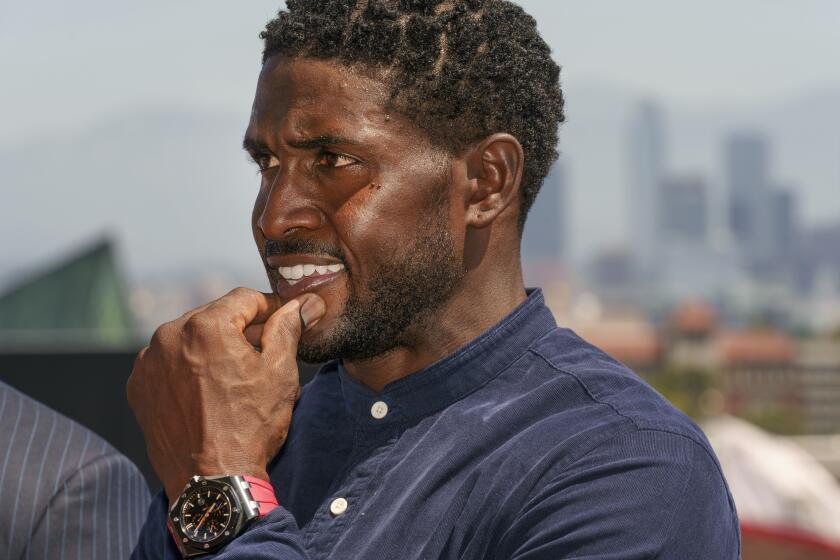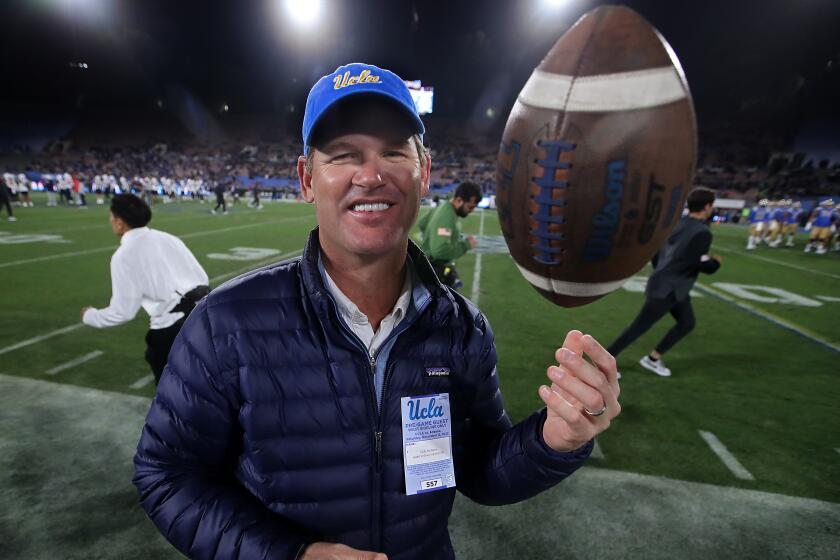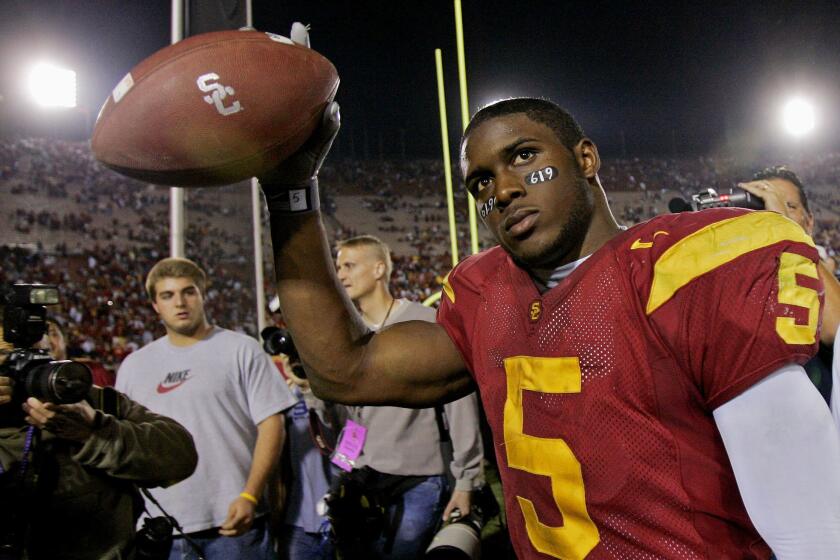Keeping recruits becoming a tough task
For college baseball coaches such as John Savage of UCLA and Chad Kreuter of USC, recruiting high school baseball players has become as challenging as putting together a 5,000-piece jigsaw puzzle.
They’re looking to build a team but might get stuck with missing pieces because of the vast sums of money being offered high school players by professional teams.
“It’s difficult for all the schools,” Savage said. “You could get wiped out in a matter of weeks.”
Recruiting top players is a balancing act: You want to offer scholarships to good players, but not too good.
Last year, all 17 high school players selected in the first round of baseball’s June amateur draft signed professional contracts.
USC lost out on infielder Mike Moustakas, a Chatsworth High graduate who was taken No. 2 overall by the Kansas City Royals and received a $4-million signing bonus. The Trojans also lost outfielder Mike Stanton, a Sherman Oaks Notre Dame graduate who was chosen in the second round by the Florida Marlins.
UCLA had recruits taken in the first and second rounds who never spent a day on campus. Cal State Fullerton lost Chatsworth’s Matt Dominguez, a first-round pick who signed with the Marlins.
“When you get them to commit, they don’t look to be a first- or second-round player,” Kreuter said. “Stanton looked like he was going to be a fifth-rounder. Moustakas looked to be a low first-round to second-round guy, and from talking to the family, if the money wasn’t right. . . . Then he’s the second pick. Who can forecast that? It went down to the last 15 minutes. He almost ended up here.”
It has become clear that college programs have little chance of having a high school recruit show up if he becomes a first-round draft pick because the money has become too lucrative and scouts seem to be doing a better job communicating with prospects and judging who’s willing to sign.
That makes USC’s Robert Stock the rarest of recruits. No one can doubt the sincerity of Stock’s heart-felt decision in the summer of 2006 to skip his senior year at Agoura to enroll early at USC and start playing college baseball as a 17-year-old catcher.
If he had stayed at Agoura, making him eligible for the 2007 amateur draft, he likely would have been a top-10 selection, perhaps equal to his friend, Moustakas.
“On the draft day, I was definitely watching and rooting for my buddy Mike,” Stock said. “I was happy for him, but it was out of my mind whether or not I could have been there.”
Kreuter knows how fortunate his program was to land a player with Stock’s talent and his belief that three years of college baseball could better prepare him for the major leagues.
“He is a rarity,” Kreuter said. “He set a precedence that a lot of guys should do. There’s a lot of kids who don’t belong going into the draft and should go to college for three years and mature and get stronger and get closer to their degree.”
Stock insists he has no regrets turning down a possible multi-million dollar payday last year. He won’t be eligible for the draft again until 2009.
“I’ve been having a great time at USC,” he said. “I had a great summer in the Cape Cod League. I feel I’ve developed as a player in the last 1 1/2 years. I do value a college education, but I thought I would develop best as a baseball player going to college. My goal is to be a successful major-league player.”
Junior pitcher Trevor Bauer of Newhall Hall could be following Stock’s lead. He has been investigating the possibility of graduating high school in December. He’s 12-0 this season and has scholarship offers from UCLA and Stanford.
The lure of a million-dollar signing bonus has left college coaches re-evaluating their recruiting philosophies, and their jobs could get tougher in the coming year. New NCAA rules will limit their rosters to 35 players next season, and they will be required to offer recruits a minimum of 25% of college expenses in scholarship money. Add to that, players no longer have the option of playing immediately if they transfer -- they have to sit out one season.
It means schools that learn in August of players choosing the pros over college will be hard-pressed to find quality replacements.
“It’s nightmarish,” Stanford assistant coach Dean Stotz said of the predicament recruiters face.
But that hasn’t stopped schools from continuing to identify young high school players and offer them scholarships several years before it becomes clear whether they’ll end up early-round draft picks.
“You have to look at how much the family values education,” Savage said.
Last month, UCLA received a commitment from first baseman Christian Yelich, a 6-foot-4 sophomore at Westlake Village Westlake who hit six home runs this season.
For now, Yelich isn’t thinking about bonus signing money.
“It’s a great school, a great field, a great team,” Yelich said. “It’s a half hour from my house. It would take a lot for me not to go here.”
USC has commitments from two of the top juniors in the Southland, pitcher-third baseman Matt Davidson from Yucaipa and pitcher-third baseman Brooks Pounders from Temecula Valley.
Will they show up for classes in the fall?
It figures to come down to the decision of pro scouts, despite Kreuter making a strong case for college.
“I’ve lived the life of minor league baseball, and it’s not the prettiest thing to do,” he said. “It’s a real job, fighting on your own for your livelihood, and there’s a whole lot of other guys trying to do the exact same thing.
“My recommendation is to go to school. You can’t go wrong.”
--
Go beyond the scoreboard
Get the latest on L.A.'s teams in the daily Sports Report newsletter.
You may occasionally receive promotional content from the Los Angeles Times.




